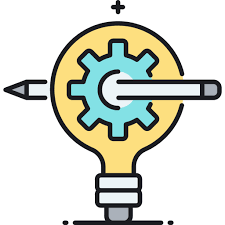The first part of the series looked at how students could prepare for their history classes by studying the history of the United States. Students learned by example how to perform research and document their findings. This first part also taught students how to prepare for their tests. In particular, I looked at some of the ways to do this that proved to be most beneficial to me. For instance, I read Mark Twain’s Rough Tricks, a biting satire on our nation’s politics and social life. I found the illustrations in the book to be particularly accurate, and I had the most success putting what I learned into practice during the tests.
My second area of focus was in writing my history. In the first installment, I found that it was beneficial to create a personal history that was an extension of my broader, personal goals. This second step helped me do just that. I identified the themes that were important to me and the research and writing that I did to support those themes led to significant achievements throughout my academic career.
I also learned how to properly spell check my sources and how to avoid plagiarism. I discovered that I was not the only person who had made these errors, and that others had done so too. As a result of this research, I spent time learning more about writing essays. One thing that stood out for me was the need to keep my tone unbiased. I realized that if I wrote in a way that supported or contrasted a perspective, I would likely fail the test.
Part of this realization came when I was editing my writing. At one point, I realized that all of the citations in my essay were either wrong or misleading. The problem with this is that by default, the people who would see my citations actually believe that they are correct. It takes a bit of work to get them to realize that I was wrong, but it is worth the effort. One way to make sure that your citations are correct is to check them against the Wikipedia and other credible sources. Even if they don’t appear to be right, as an academician you have to at least consider their arguments.
Another aspect of writing a great essay is researching your topic well. I learned that much of the successful writing in history was done simply by reading as much as possible. Of course, there were a number of books and articles that I had to write my own essays for, but even then this was not too difficult. I simply read more about the period under discussion and used secondary sources that provided additional insights that I could then incorporate into my writing. The result was an impressive piece of writing that did not rely heavily on quotations.
Finally, part of learning how to write a history essay is being able to identify what is important to you. This is particularly useful for those who have a strong personal and social bias towards one side of history. While it might seem like common sense, many professors expect their students to assume a point of view whether it is pro-liberal or pro conservatism, and this can create some difficulty when writing your history project.
In the end, there is no such thing as too much knowledge about a particular period of time or event. However, it can be helpful to learn how to write a history essay by expanding your scope beyond your primary source material. If you approach your project with a clear understanding of your own knowledge, you will have the ability to produce a quality essay that engages your audience.
